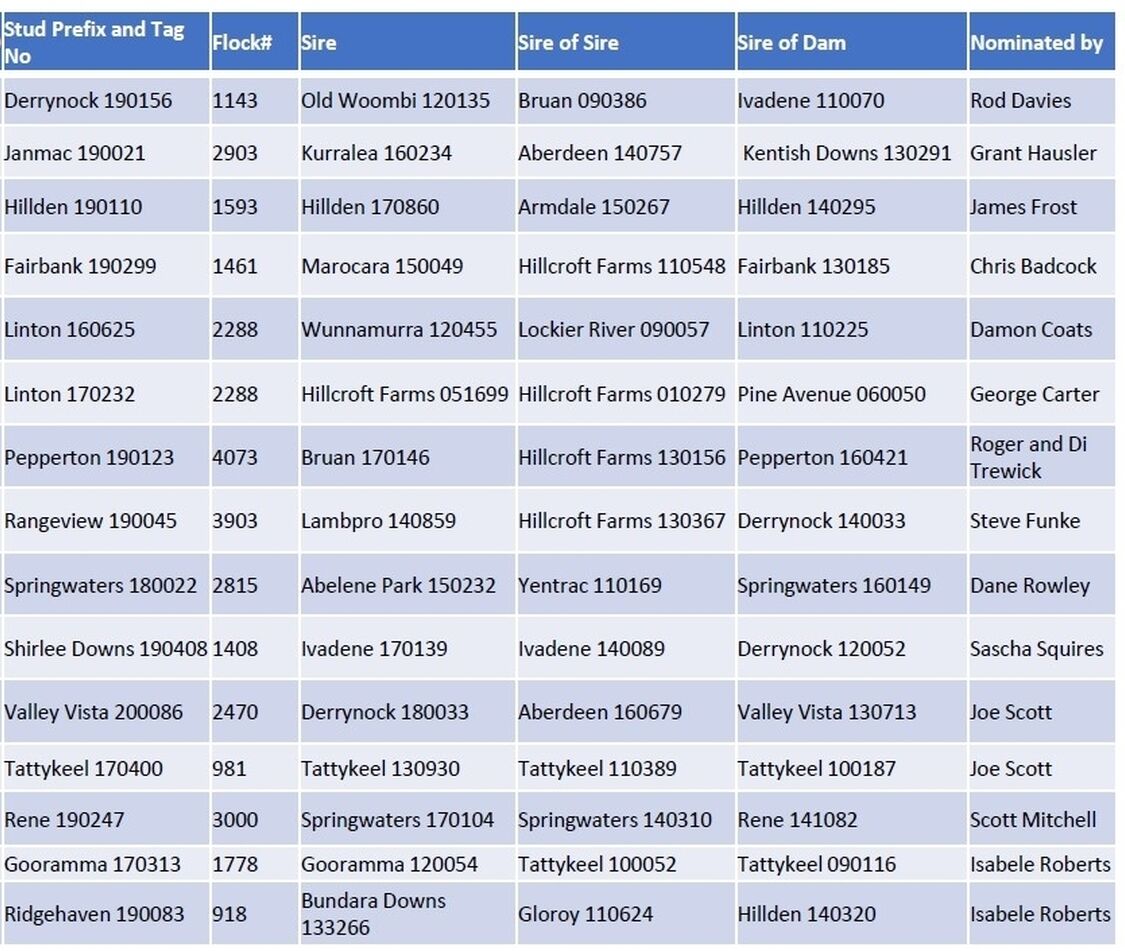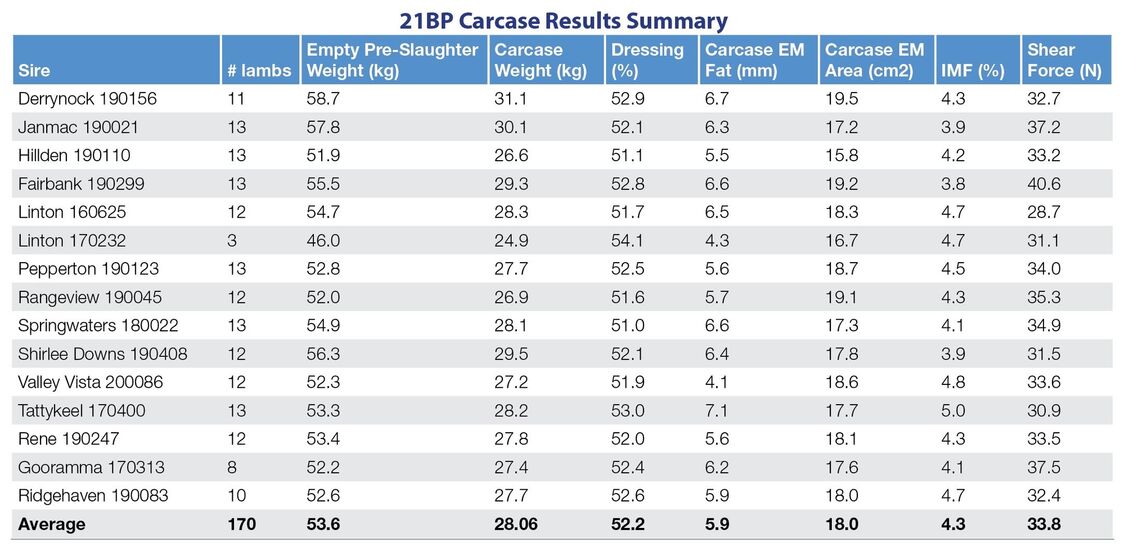
Bowan Park Poll Dorset stud research flock is open to all members of the Australian Poll Dorset Association (APDA) and provides them the opportunity to assess their flock genetics and benchmark them within the Poll Dorset breed. The purpose of the progeny trial is to compare the performance of one sire to other in the same cohort of lambs. The performance values to be measured are key commercial traits relevant to the Poll Dorset’s role as a terminal sire – growth, muscle and fat measured on live animals, and yield and eating quality at carcase assessment.
Carcase Report
Lamb Selection
Average age of lambs for slaughter 16-20 weeks *NOTE: The majority of these lambs were at a marketable (22 – 26kg HCWT) at 14 weeks. The extended period on farm with high quality feed has resulted in a higher condition score than preferred for ideal carcase specifications.
- 12 lambs per sire selected via the following criteria (when possible):
Animal in full health, showing no signs of disease or effected by low nutrition
6 male, 6 female
Top on-farm performers – growth, muscle scans
Even sample of Sire Of Dam
1 of a birth unit (single, twin, triplet)
Lambs killed 27/9/21 at Gundagai Meat Processors (GMP). Carcase data was collected by UNE Meat Science team, co-ordinated by Dr Peter McGilchrist.
Dressing Percentage
The cohort averaged 52.20%
The highest dressing % for an individual lamb was 56.5%
Eye Muscle Measurements
The cohort EMA averaged 17.97cm2
The largest EMA was 25.2cm2
The cohort FAT averaged 5.94mm
Intramuscular Fat and Shear Force
The preferred level of IMF in lamb meat is between 4% and 6%, with a current industry mean value of 4.3%. The IMF range in Information Nucleus Flock lambs was between 2% and 7% (lambs 210+ days of age).
The cohort averaged IMF 4.35%, SF5 33.8N
Shear force is a guide to the consumer perception of tenderness and is the force required to cut through a cooked sample of meat using a standardised cutting blade after five days ageing (SF5). Lower shear force values represent more tender meat. Shear force over 42N is considered tough.
The highest IMF was 7.77%, the lowest SF5 was 20.44N
NOTE: Industry expectations for IMF and SF5 are based on lambs 210+ days of age. This cohort are 130 – 150 days of age. The age and maturity of the lamb may or may not have an influence on eating quality trait measurements.
Observations from Bowan Park Convenors
PERFORMANCE DATA
Birth weights and growth rates must be balanced out. There are too many higher weight lambs that could be a problem if nutrition is not correct pre lambing.
Growth rates are good, but must be balanced with overall muscling
Increasing dressing % can be a real bonus to the $/head at slaughter
Growth was found in high growth ASBV sires
IMF was found in sires of untested and tested pedigrees
IMF% must be addressed at the genetics level, but not the detriment of ideal birth weight and high growth
There are genetics out there that have high LMY and high IMF … we just need to find them
VISUAL ASSESSMENT
Top 3 to improve:
Fuller hindquarter shape
Foot and leg structure
Consistency of type (within and between sires)
Implications for the Poll Dorset breed
We need more QUALITY DATA
- We need more CARCASE DATA
For our own knowledge of how the animal actually performs
ASBVs for carcase traits are most useful if there has been progeny tested
- We need more genetic variation tested
Untested does not equal poor quality - it just means an absence of knowledge
